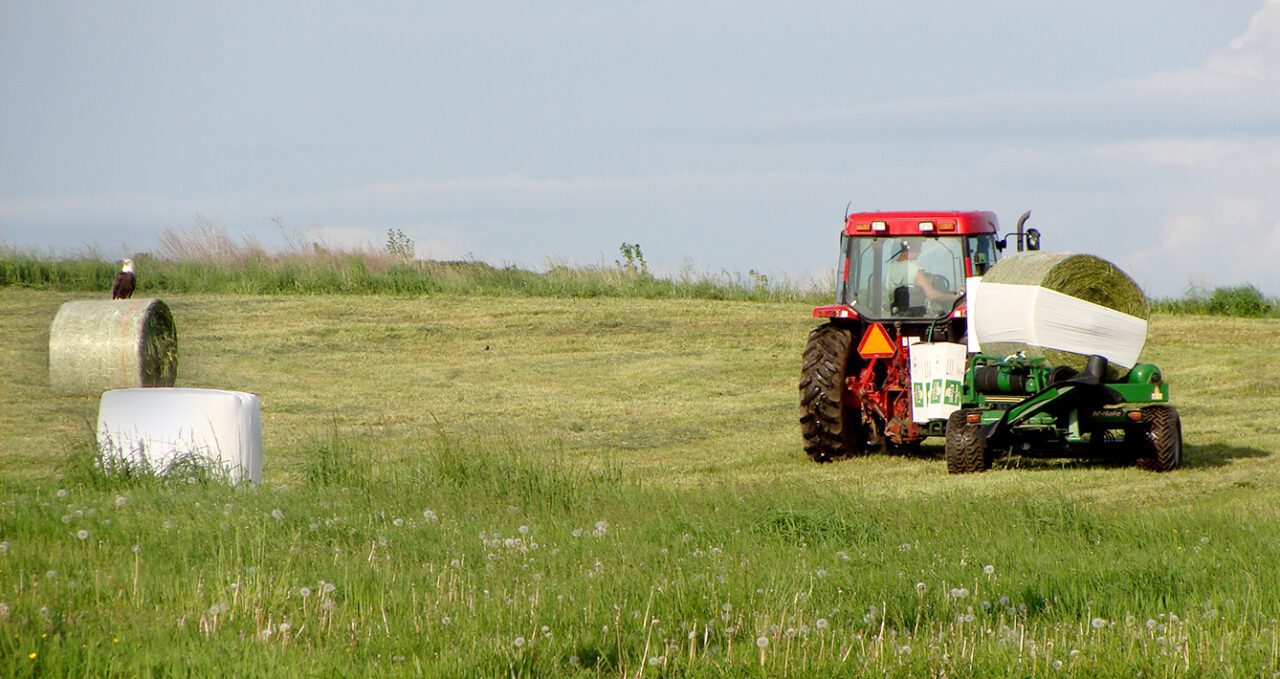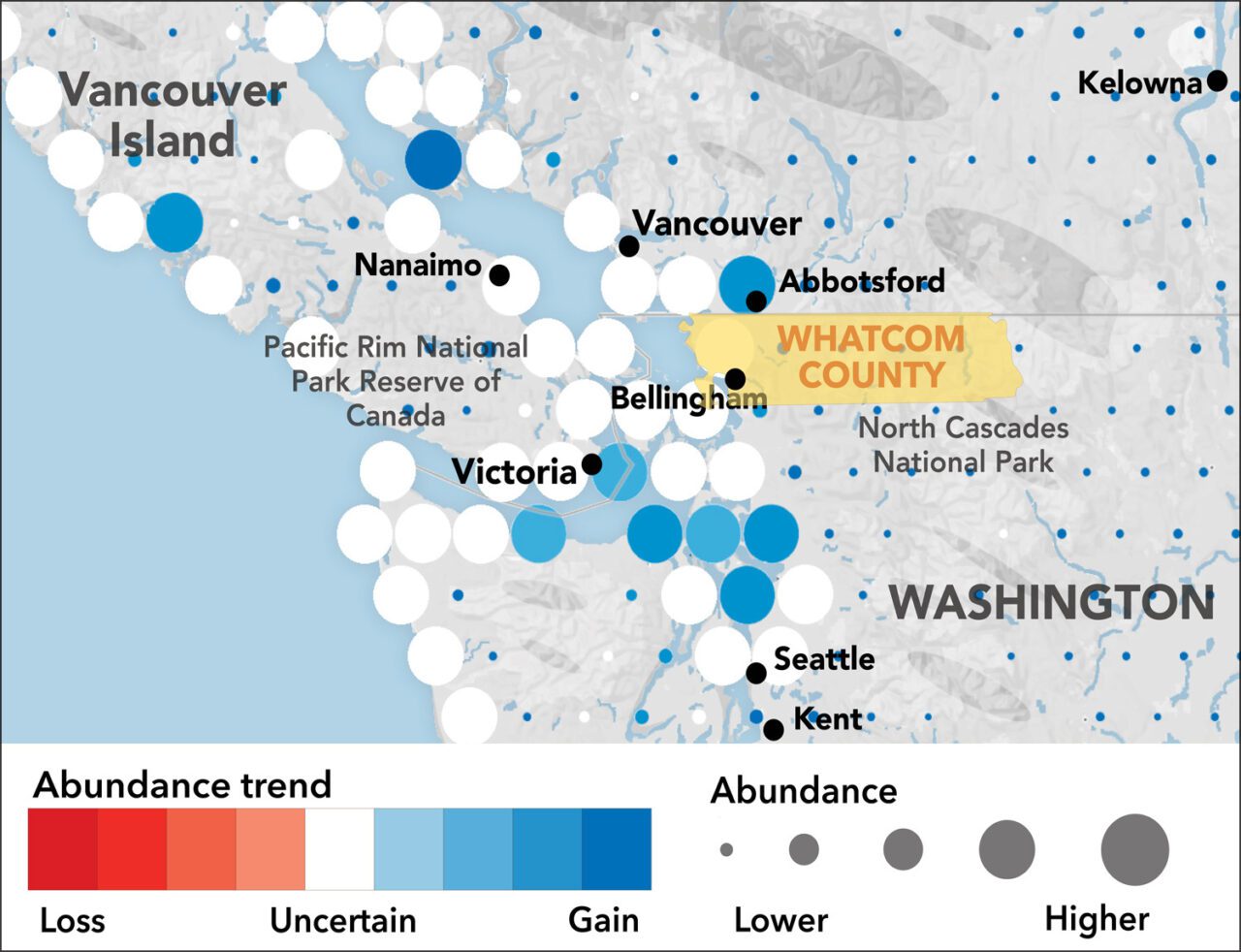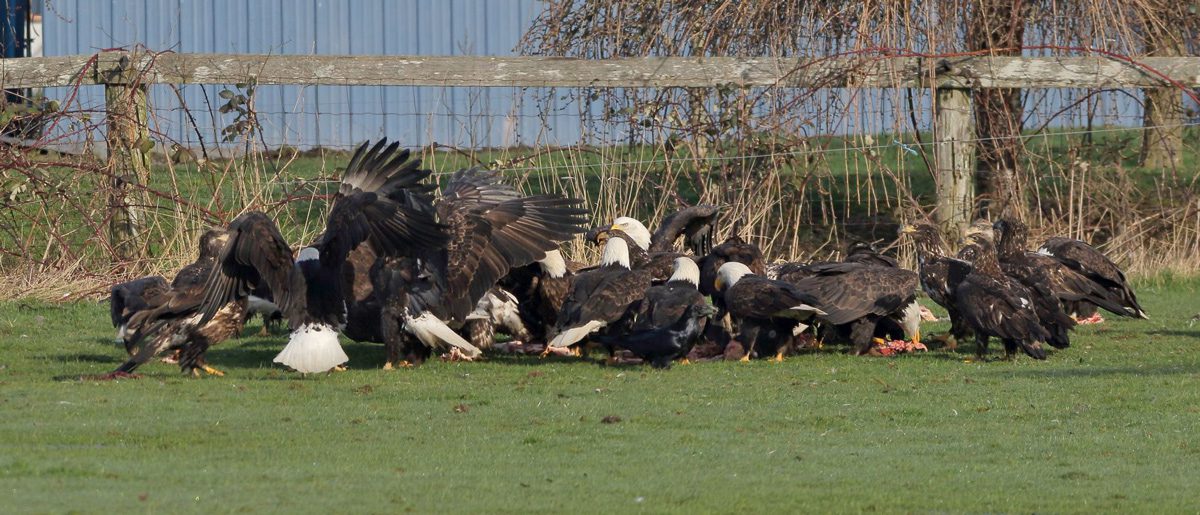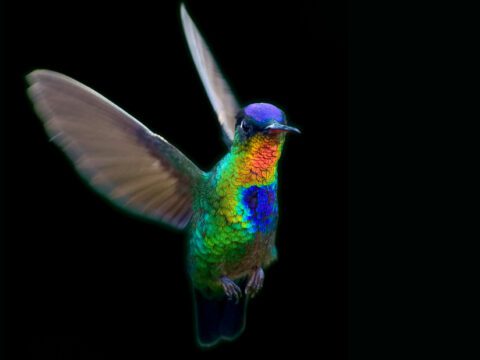In A Climate-Change Shift, Dairy Farmers In Washington State Welcome Eagles
June 28, 2023
From the Summer 2023 issue of Living Bird magazine. Subscribe now.
Bald Eagles are turning some Pacific Northwest dairy farms into birding hotspots, and that turns out to be a good thing for the eagles, the farmers, and birdwatchers.
A pair of studies published recently in the journals Ecosphere and Northwest Science—based on research led by Ethan Duvall, a doctoral candidate in Cornell University’s Department of Ecology & Evolutionary Biology— revealed the drivers of a change in Bald Eagle foraging behavior and habitat use in the region. During the winter, eagles need a reliable source of food to survive. That used to be the carcasses of salmon.

“During the past 50 years, climate change has altered the chum salmon spawning schedule, causing the fish to run earlier in the winter,” says Duvall. “Now, salmon are commonly spawning before annual flooding is at its peak. The fish who spawn and die are then swept away by the high water instead of being deposited on shore where the eagles can get them.”
At the same time as food supplies are shrinking, the number of Bald Eagles is growing—the result of decades of conservation measures. According to eBird Trends data, local Bald Eagle populations in Whatcom County, Washington, have grown by 70% to 110% since 2007. In response, the eagles have turned from the rivers to nearby agricultural areas.
Dairy farmers interviewed for Duvall’s research in Whatcom County say they are satisfied with the new arrangement because the eagles clean up the steady flow of animal byproducts resulting from the births and deaths of cows. The birds also keep a lid on traditional farm pests, such as rodents and starlings. Every one of the 20 dairy farmers interviewed in the study said they had no problem with the eagles being on their land and didn’t want them to leave.

Duvall says that farmer attitudes toward eagles in Whatcom County are not the norm in other agricultural areas, especially near free-range poultry farms where eagles prey on chickens.
“The narrative around birds of prey and farmers has traditionally been negative and combative, mainly due to claims of livestock predation,” says Duvall. “However, dairy farmers in northwestern Washington do not consider the eagles threats. In fact, many farmers appreciate the services that the eagles provide.
“This study gives me hope that, moving forward, farmers, wildlife managers, and conservationists can come together to think critically about how to maximize benefits for people and wildlife in the spaces they share.”
The chance to view Bald Eagles up close, sometimes in large numbers, has drawn birdwatchers to dairy farms in Whatcom County. Emma Rogers didn’t even own a pair of binoculars when she first saw the eagles on a dairy farm near her Bellingham, Washington, home.
“It was my first time really watching birds,” Rogers says. “I had such a blast with that experience, I was hooked. Now, I see Bald Eagles almost every day but I still get giddy when I see those distinct wingbeats or striking white head and tail. I feel like the world stops for a second because they have such a commanding presence.”

All About Birds
is a free resource
Available for everyone,
funded by donors like you
American Kestrel by Blair Dudeck / Macaulay Library


